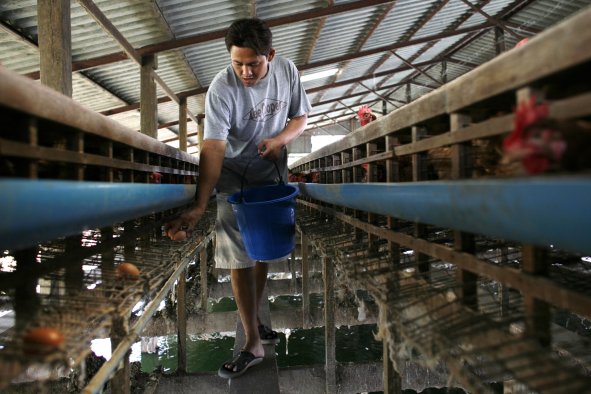Type 2 diabetes increased in the U.S. by almost 20 percent between 2012 and 2022, with the South and Midwest most affected, according to recent research.
Arkansas, Kentucky and Nebraska saw the biggest jumps, with a total of 10 states seeing increases of 25 percent or more: Arkansas, Kentucky, Nebraska, Texas, Alabama, Minnesota, Illinois, West Virginia, Delaware and Massachusetts.
"In these areas, people are at higher risk of developing diabetes, so policymakers and public health officials need to focus on these regions," said lead author Sulakshan Neupane in a statement.
"Diabetes is increasing day-by-day in the U.S., and it will increase even more in the coming years."
More than 37 million Americans—or approximately one in 10—have type 2 diabetes, and more than one in five among the over 65s, at a total estimated cost of $412.9 billion nationally, according to figures from the Centers for Disease Control and Prevention and American Diabetes Association.
"Type 2 diabetes is a condition driven by overconsumption of refined carbohydrates," nutritional therapist Kirstie Lawton told Newsweek.
"When we consume these in levels greater than the body can manage, it leads to the excessive release of insulin. Initially we become 'insulin-resistant.' Here, the body's cells become overwhelmed by the presence of insulin in the blood and stop responding to its request to uptake glucose.
"Imagine insulin as a postman, banging on your door to deliver your mail. It's fine if it happens a few times a day, but when it's happening all day long, you'd stop responding. Over time, this leads to prediabetes and, eventually, to type 2 diabetes."
Researchers used data from a nationally representative health survey of more than 400,000 people across the U.S. to identify type 2 diabetes trends in 2022 compared to 2012.
In states where levels were higher, the study suggested this was due to socioeconomic differences.
"Unfortunately, we live in a society where fresh, organic, whole foods are more expensive, and highly processed, refined foods are cheap," said Lawton.
"Lower-income areas are known to have higher rates of many social issues which may make healthy eating feel less achievable, and/or less of a priority."
However, these areas also had a higher rate of people with disease risk factors, in terms of age, race, weight and activity level.
Specifically, rates of type 2 diabetes rose dramatically among non-Hispanic Black people nationwide, to just under 16 percent, and there are more non-Hispanic Black people living in the Southern and Midwestern states.
Similarly, higher-income individuals less likely to live in these areas were also 41 percent less likely to be diagnosed with type 2 diabetes, and individuals with a college education were 24 percent less likely to be diabetic.
Excess weight and a lack of physical activity were also identified as key risk factors in the data. One in five obese people reported having type 2 diabetes in 2022, and one in 10 people who were classified as overweight.
Physical activity seemed to have a protective effect. Fewer than 10 percent of self-reported physically active people also said they had type 2 diabetes, compared to 19 percent of inactive people.
"Be more active," said Neupane. "Pay more attention to your physical health. Some risk factors like age and race cannot be modified, but you can do something to lower risk of diabetes, like healthy eating, maintaining an active lifestyle and losing weight."
"There are many factors why diabetes may be on the rise. Most important is the overconsumption of refined carbohydrates, think pastries, pies, pizza bases, white bread, rice and pasta, in the Western diet," said Lawton.
"There are other factors also: lack of exercise, dysregulated sleep, high-stress levels and exposure to multiple environmental factors all play a role.
"The best way to support your blood is to eat regular meals with a protein-rich snack between if you are hungry. Make sure your meals are well-balanced.
"Where possible aim for the least processed foods available. It can help to utilize a lower carb support program."
Do you have a tip on a food story that Newsweek should be covering? Is there a nutrition concern that's worrying you? Let us know via science@newsweek.com. We can ask experts for advice, and your story could be featured in Newsweek.
References
Neupane, S., Florkowski, W. J., Dhakal, U., Dhakal, C. (2024). Regional disparities in type 2 diabetes prevalence and associated risk factors in the United States, Diabetes, Obesity and Metabolism, n/a(n/a). https://doi.org/10.1111/dom.15797
Neupane, S., Florkowski, W. J., Dhakal, C. (2024). Trends and Disparities in Diabetes Prevalence in the United States from 2012 to 2022, American Journal of Preventive Medicine 67(2), 299–302. https://doi.org/10.1016/j.amepre.2024.04.010
Disclaimer: The copyright of this article belongs to the original author. Reposting this article is solely for the purpose of information dissemination and does not constitute any investment advice. If there is any infringement, please contact us immediately. We will make corrections or deletions as necessary. Thank you.



